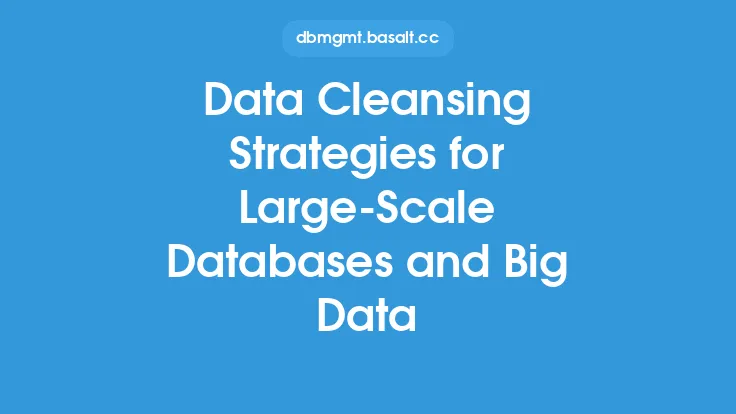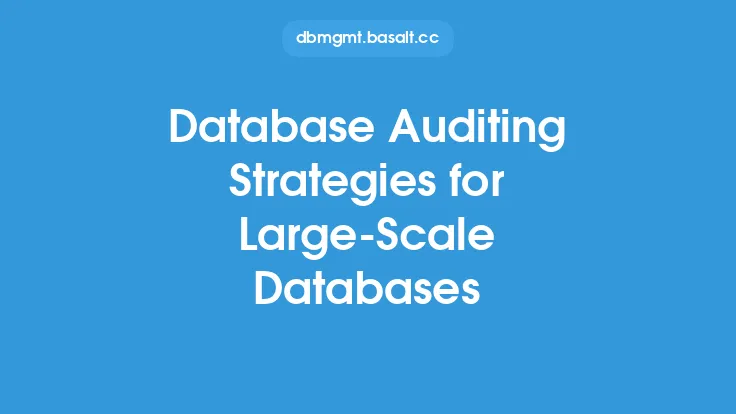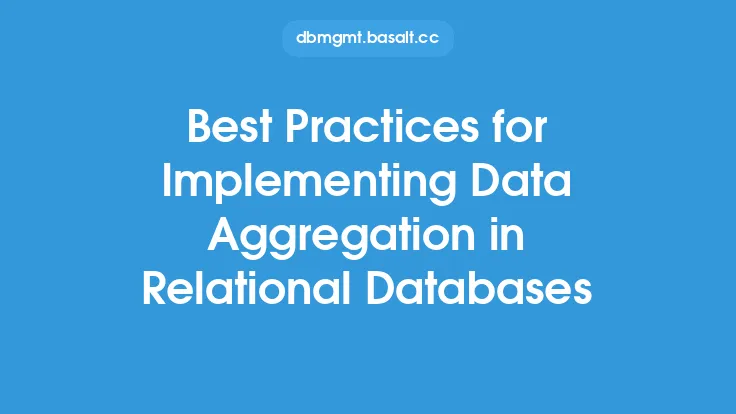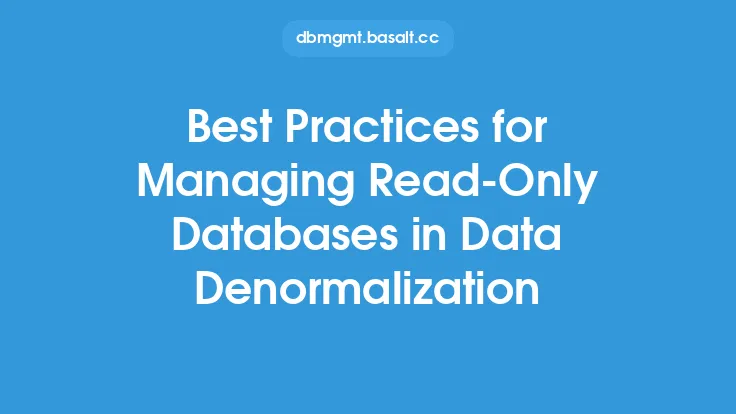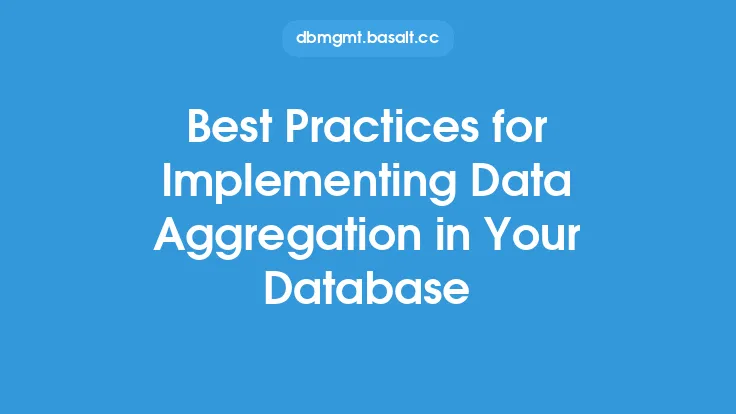When dealing with large-scale databases, one of the most critical aspects of data management is optimizing data aggregation. Data aggregation refers to the process of gathering and combining data from multiple sources into a single, unified view. This process is essential for extracting insights, identifying trends, and making informed decisions. However, as the size and complexity of databases continue to grow, optimizing data aggregation becomes increasingly challenging.
Introduction to Data Aggregation Optimization
Optimizing data aggregation involves a combination of techniques, strategies, and best practices that aim to improve the performance, efficiency, and scalability of data aggregation processes. This includes optimizing database design, indexing, and querying, as well as leveraging advanced data aggregation techniques such as parallel processing, data partitioning, and caching. By optimizing data aggregation, organizations can reduce the time and resources required to extract insights from their data, improve data quality, and enhance decision-making capabilities.
Database Design and Indexing
One of the most critical factors in optimizing data aggregation is database design and indexing. A well-designed database with proper indexing can significantly improve the performance of data aggregation queries. This includes creating indexes on columns used in WHERE, JOIN, and ORDER BY clauses, as well as using techniques such as data partitioning and parallel processing to distribute the workload across multiple servers. Additionally, using data compression and encryption can help reduce storage requirements and improve data security.
Query Optimization
Query optimization is another essential aspect of optimizing data aggregation. This involves analyzing and optimizing SQL queries to reduce the amount of data being processed, minimize the number of joins and subqueries, and leverage advanced query optimization techniques such as query rewriting and caching. Query optimization can be performed using various tools and techniques, including query analyzers, indexing, and caching. By optimizing queries, organizations can reduce the time and resources required to execute data aggregation queries, improve data quality, and enhance decision-making capabilities.
Advanced Data Aggregation Techniques
Advanced data aggregation techniques such as parallel processing, data partitioning, and caching can significantly improve the performance and scalability of data aggregation processes. Parallel processing involves distributing the workload across multiple servers or processors, while data partitioning involves dividing large datasets into smaller, more manageable chunks. Caching involves storing frequently accessed data in memory to reduce the time and resources required to retrieve data from disk. By leveraging these techniques, organizations can improve the performance and scalability of data aggregation processes, reduce the time and resources required to extract insights from their data, and enhance decision-making capabilities.
Data Aggregation Algorithms
Data aggregation algorithms play a critical role in optimizing data aggregation processes. These algorithms are used to combine and summarize data from multiple sources, and can be optimized to improve performance, efficiency, and scalability. Common data aggregation algorithms include SUM, AVG, MAX, MIN, and COUNT, as well as more advanced algorithms such as GROUPING SETS, ROLLUP, and CUBE. By optimizing data aggregation algorithms, organizations can reduce the time and resources required to extract insights from their data, improve data quality, and enhance decision-making capabilities.
Data Aggregation Tools and Technologies
A variety of data aggregation tools and technologies are available to help organizations optimize data aggregation processes. These tools and technologies include data integration platforms, data warehousing solutions, and business intelligence software. Data integration platforms provide a unified view of data from multiple sources, while data warehousing solutions provide a centralized repository for storing and analyzing data. Business intelligence software provides a range of tools and techniques for analyzing and visualizing data, including reporting, dashboards, and data mining. By leveraging these tools and technologies, organizations can improve the performance and scalability of data aggregation processes, reduce the time and resources required to extract insights from their data, and enhance decision-making capabilities.
Best Practices for Optimizing Data Aggregation
Best practices for optimizing data aggregation include monitoring and analyzing data aggregation processes, optimizing database design and indexing, and leveraging advanced data aggregation techniques such as parallel processing and caching. Additionally, organizations should establish clear data governance policies and procedures, ensure data quality and integrity, and provide training and support for data aggregation users. By following these best practices, organizations can improve the performance and scalability of data aggregation processes, reduce the time and resources required to extract insights from their data, and enhance decision-making capabilities.
Conclusion
Optimizing data aggregation is a critical aspect of data management that requires a combination of techniques, strategies, and best practices. By optimizing database design and indexing, query optimization, advanced data aggregation techniques, data aggregation algorithms, and leveraging data aggregation tools and technologies, organizations can improve the performance and scalability of data aggregation processes, reduce the time and resources required to extract insights from their data, and enhance decision-making capabilities. By following best practices and staying up-to-date with the latest trends and technologies, organizations can ensure that their data aggregation processes are optimized for maximum performance, efficiency, and scalability.
